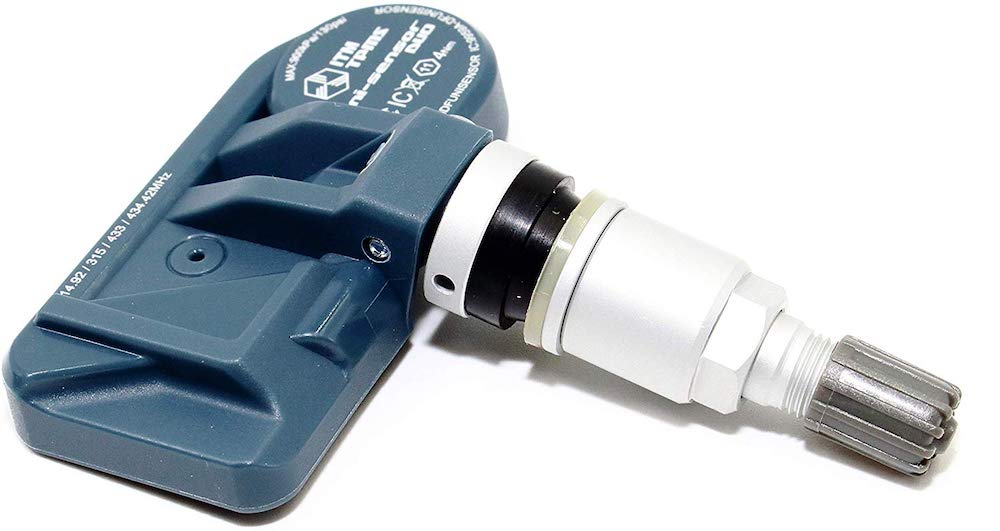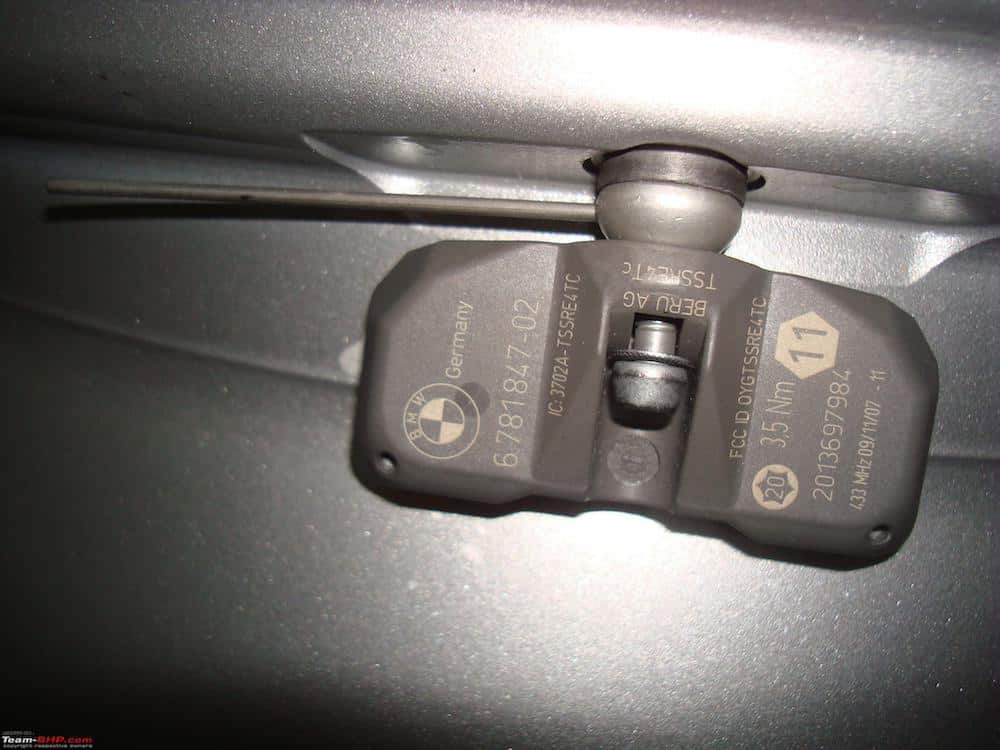
Improperly inflated tires have numerous risks associated with it, some being catastrophic. United States government legislation now mandates automakers to include production vehicles with a system that monitors tire pressures. Through this blog post, we will look into the evolution of tire pressure monitor sensor technology and how they work. First, let us start with the basics of tire pressure
Where can I find what tire pressures my vehicle should be using?
The most obvious place to check your tire pressure recommendations is in your owner’s manual. If you do not have a copy of your BMW owner’s manual you can download a free digital version from our website HERE. In addition, tire pressure recommendations is located on a placard inside the driver's door jamb of your vehicle. This placard includes not only tire pressures but also vehicle weight and VIN.
It is important to note that the tire pressures listed are for vehicles with OEM wheels, the ones delivered with your vehicle. Therefore, if you have aftermarket wheels these are NOT the recommended tire pressures. Also note, these tire pressures are the COLD pressure readings. The best time to inflate your tires is in the morning after your car has been sitting all night. Checking your tire pressures after you have driven is not an accurate method as tire pressures increase with heat, friction, of driving.
To learn why tires lose pressure over time and alternate methods of filling tires, check out our post on nitrogen-filled tires HERE
What are the consequences of improperly inflated tires?
Since tire pressure gradually reduces over time, most drivers do not notice the loss in tire pressure until it is too late. BMW recommends checking your vehicle’s tire pressure twice a month. Under or over-inflated tires can have the following risks:
➛ Increased tire wear, reducing tire life.
➝ Impaired vehicle handling
➛ Reduced fuel economy
➝ Risk of a tire blow out
When did tire pressure monitoring systems start?
In the year 2000, numerous lawsuits were filed against major tire manufacturers for catastrophic failures. The US government passed the “TREAD” Act in November 2000. The TREAD act stands for “Transportation Recall Enhancement Accountability Documentation”. This act involved many new standards for the tire industry but the topic of focus will be on the requirement for TPM (Tire Pressure Monitoring).
There are two major ways BMW vehicles measure tire pressure, indirectly and directly. Let us go into further detail on these two methods and how they work below.
How does indirect tire pressure monitoring work?
The first iteration of tire pressure monitoring was called the “Indirect” TPM system or FTM (Flat Tire Monitoring) system. This system does not measure tire pressure directly, as the name implies, but monitors tire speed. Tire speed is measured through wheel speed sensors. The vehicle’s ABS / DSC system determines pressure loss in tires by comparing wheel speed of all 4 tires. Loss in tire pressure results in a loss of wheel speed, as well as a change in tire diameter. As a result, the vehicle can alert the driver of tire pressure loss.
The advantage of this system is that it does not require any additional equipment than what is already on the vehicle. The DSC (Dynamic Stability Control) system used for traction in conjunction with the wheel speed sensors has been a part of BMW design since the 80s. A downside of this system is that the vehicle has to be moving for a reading to take place.
The first BMW model to feature the indirect tire pressure monitor was the 2000 E39 M5. This first system will detect a pressure drop by 30% +/- 10% and alert the driver typically with a light on the dash. BMW recommends resetting the FTM system after a tire change, tire rotation, or correcting tire pressure.
How does direct tire pressure monitoring work?
Direct TPM systems directly measure tire pressuring at each wheel as well as temperature. A benefit of this system over the indirect method is the vehicle does not have to be moving to get a reading. In the United States, all vehicles sold must have the direct TPM system starting in 2005 and all vehicles by 2007 must be in full compliance. This system involves a sensor installed at the valve stem of each wheel called a wheel transmitter module. These sensors monitor tire pressure and send a signal to a module via antennas.
The first BMW model to feature the direct tire pressure monitor was the E65 / E66 7 series and was an option on the E46 3 series from August 2003 production onwards.
How do the wheel transmitter modules work?
Each module contains a long life, lithium-ion battery to the internal transistor of the sensor. When the tire is not spinning the module defaults to an energy-saving mode. Each transmitter is assigned a unique ID which assigns the wheel to each corner of the car. The wheel arches on the body of the car contain a small antenna that picks up the signal from the wheel transmitter when the valve stem passes the antenna. When tire pressure falls below 3 psi (.2 bar) for more than 8 minutes, an alert will signal.
How can I identify which TPM system is on my vehicle?
The FTM or indirect tire sensors have a traditional black valve stem. The direct TPM system has a valve stem with a hex head on the stem which can be seen from the outside of the wheel. Please refer to the image below for clarification.
Where can I learn more fun facts about BMW?
Learn more BIMMERtips fun facts by clicking HERE




